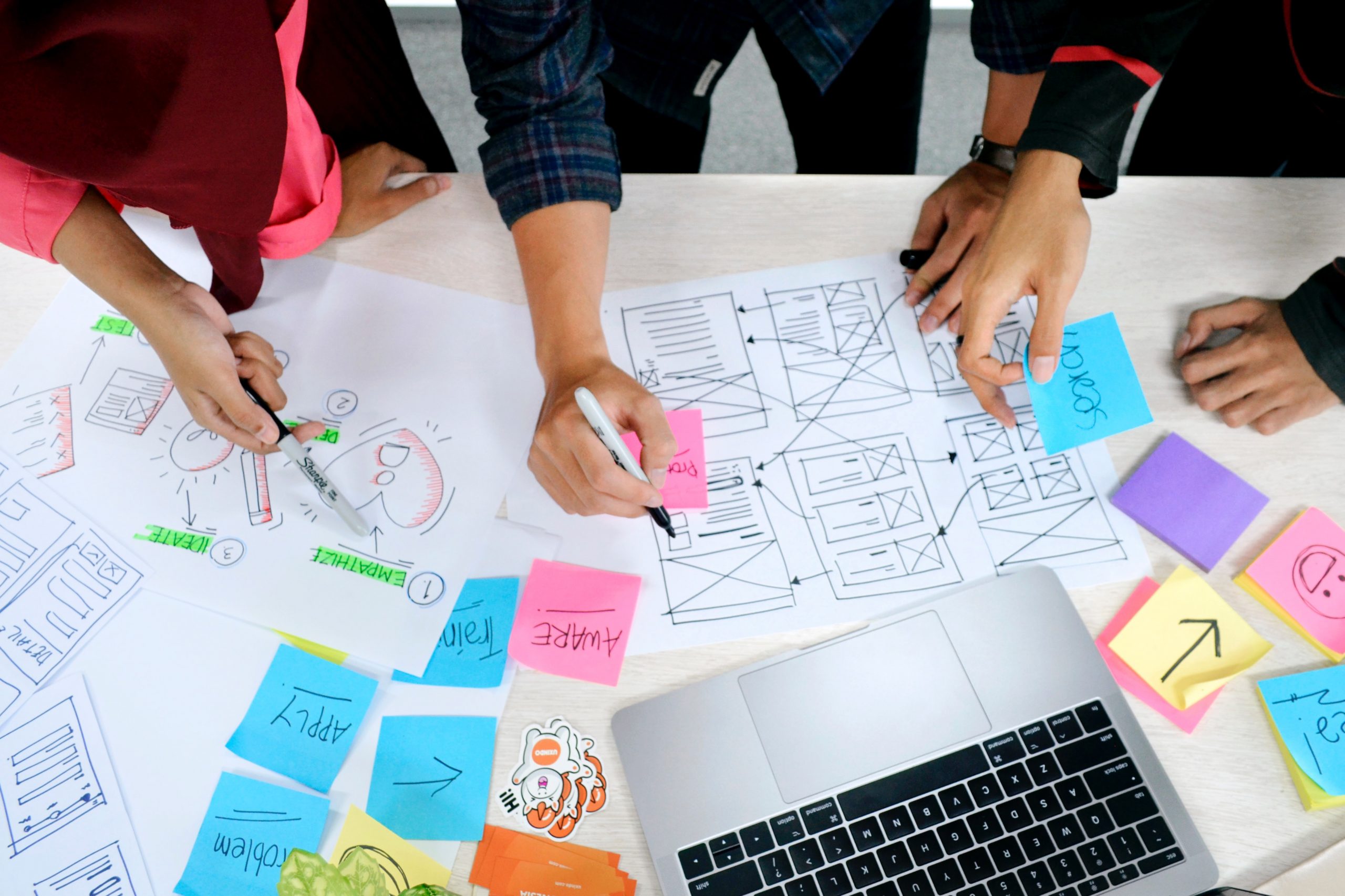What Design Thinking Teaches Us About Teamwork
Design thinking and teamwork should positively influence each other. Design thinking encourages curiosity, flexibility, collaboration, and positivity, creating teams that are on the same page when it comes to finding solutions for problems.

[vc_row][vc_column][vc_row_inner][vc_column_inner][vc_column_text]Published on 15 October, 2020[/vc_column_text][vc_separator][/vc_column_inner][/vc_row_inner][vc_column_text]
How is it possible to create an environment of trust and psychological safety among teams when the notions of teamwork are put to the test? Every challenge comes with an opportunity when tackled correctly, and this, in turn, makes us pose the right questions and build for a better future.
Design thinking will help us in doing that. By emphasizing human needs, we can steer ambiguity through empathy, experimentation, and expansive thinking. As designers, innovators, and leaders, we can utilize the following tools and mindsets to cruise through the future during these difficult times.
Be in favor of showing empathy
Listening to people is the need of the hour. Designers should focus on understanding human needs and enhance their perspective using techniques taken from psychology and cultural anthropology. Empathy is what aids in borrowing inspiration from people’s feelings, motivations, and needs; this will help you create meaningful, resourceful solutions to real problems.
A skill that’s essential during the present times is to listen deeply and understand what people really need. Agree, some assumptions may have already been made based on your own needs.
It’s these assumptions that need to be challenged, in order to create a useful solution.
It wouldn’t be wrong if we said that empathy is one of the most significant skills, going into the future.
At Monsoonfish, we incorporate empathy into our work culture with little gestures such as starting our stand-up calls by asking how everyone is doing first. We even do that during our 1-on-1s, which adds to the connective tissue of personal bonding, aside from sharing memes, worldly updates, and other useful information. The emails take a relaxed tone as well, signifying the tightly-knit design agency culture. This proves to be a much-needed breath of fresh air!
Pose the question, “How might we…?”
While it’s easier to think that innovation often begins with a great idea, the fact of the matter is, it begins with a great question – a problem that needs a solution. We all have great ideas. We also have the knack to notice issues, especially while trying out something new. Something we can all improve on is expansive thinking by coming up with problem statements that can be turned into questions – questions that need great solutions.
A design thinking tool known as the “How might we” (HMV) can help frame good questions. Here are a few examples.
Problem #1: Since we do not have a choice but to work from home, training and orientation sessions fail to establish the vital human connection between employer/employee, manager/subordinate, and colleague to colleague. How might we make the training and orientation process outshine what we deliver in person?
Problem #2: Working from home is difficult for me. I tend to get distracted by the goings-on in the house and struggle to concentrate on work. How might we help those working from home execute different working styles?
Once the problem is reframed into a question, creative ideas begin to flow.
Tap into your experimental mindset
After exploring the possibilities, it’s time to start experimenting. Experimentation evokes the old saying: Fail fast, fail often. But the focus isn’t on the failure – it’s what you learn from it. By failing, you immediately realize what works and what doesn’t, given a particular situation and the resources at your disposal. This helps in building appropriate solutions.
Experimentation can be more difficult than you think. Our brains are wired to conserve energy; this leads to us pursuing ideas and solutions that have worked for us in the past, and therefore, we feel reluctant to try new methods. The need to establish an atmosphere where employees and teams feel confident about taking risks and experimenting with new things, is upon us, even virtually. Encourage them to exhibit their vulnerabilities and push aside those insecurities; invest in their psychological safety. This would mean the world to them.
When this process is set in motion, idea evaluation becomes a lot better, understanding your users becomes easier, and your true strengths as a team player or a leader will start to show. Therein lies the essence of design thinking. What more do you need to keep up with the challenges of the foreseeable future?
CATEGORIES







